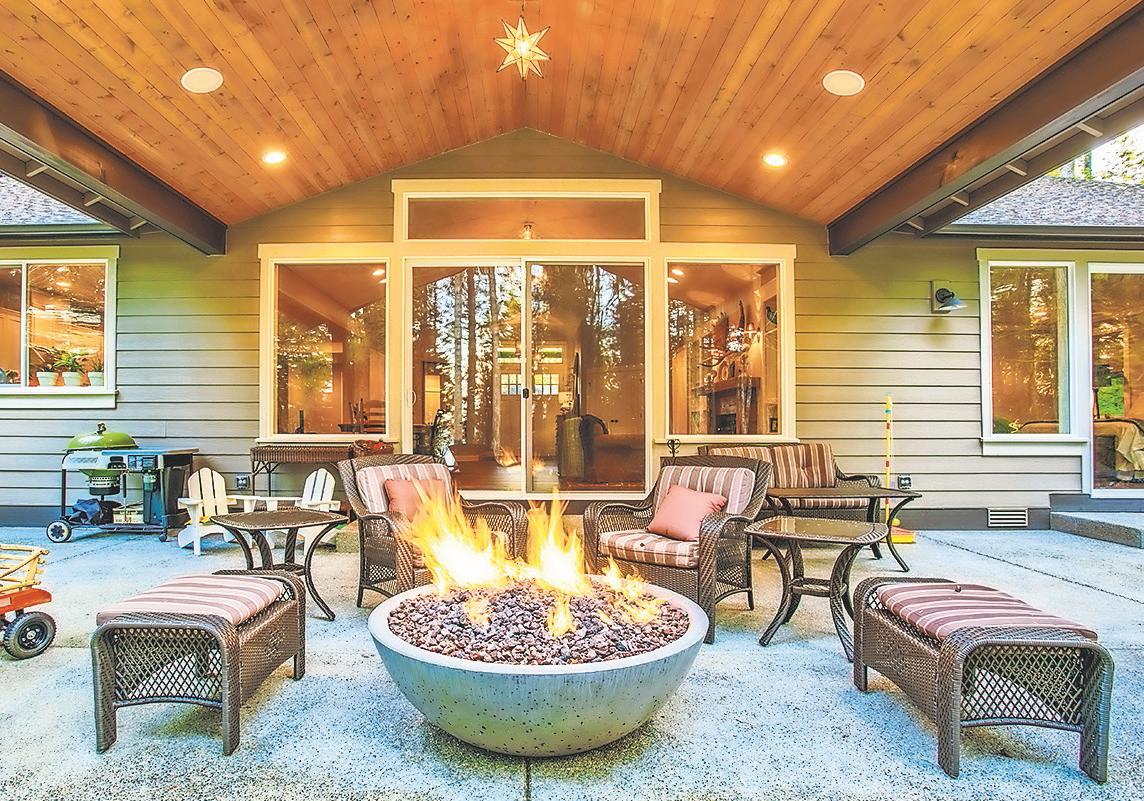
3 minute read
How to create a winterfriendly outdoor living space

For many homeowners, the arrival of fall and winter marks an end to time spent lounging and dining al fresco on the patio. But cold air does not necessarily mean patio furniture must be packed up until flowers bloom anew in spring.
In its 2017 Home Design Trends Survey, the American Institute of Architects found that consumers continue to emphasize practical features that expand the functionality of their homes via heavy investment in outdoor living spaces. The survey found that the popularity of outdoor living spaces increased by 72 percent between 2012 and 2017, highlighting just how much homeowners enjoy spending time outdoors. By taking measures to make their outdoor living spaces winterproof, homeowners can enjoy these areas of their homes even more.
• Cover your deck. A covered deck may appear to make the space less enjoyable during spring and summer. However, covered decks can protect residents from the sun on especially hot days while also making the space more functional in winter. An overhead shelter on a deck can be outfitted with heaters (and fans to provide a cooling effect in summer) and allow residents to sit outside and watch snow fall without getting wet. programs for architects and designers, like AutoCAD, Autodesk and Revit, this user-friendly technology allows you to create 3D renderings and move around furniture, decorative items, appliances, and other elements right in the app.

• Plant the right trees. Coniferous trees prevent wind, which can be especially harsh in winter. Homeowners who are unsure about which direction wind typically comes from can consult a landscape architect to determine where to plant the trees to ensure they’re most effective.
• Floor Plan Creator: Start with the basics by plotting out precise and accurate floor plans. This app enables you to create multiple floor rooms in 3D and get automatic figures for perimeters, walls and more.

• Ikea Home Planner Tools: The free, easy-to-use home planner tool from the popular furniture giant enables you to see how items from the store can look in your space – before you bring it home.
The Kitchen Planner from the company also makes it simple to enter Ikea components and see how much the proposed kitchen design may cost.
• Magic Plan: This is another popular feature-filled app for planning designs. The technology even allows you to take a picture of your existing room and create floor plans.

• Planner 5D: This is an extensive roomdesign tool that helps you design rooms down to the smallest architectural details. It also can be taken outdoors for landscaping and pools, utilizing 3D graphics.
• Room Scan Pro: This app draws floor plans simply by having you hold the phone up to a wall. The software will then scan the circumference and plot out the requisite measurements. These are just a few of the room planners that can make it easier to see what a finished design product may one day look like.
• Fire up the patio. A firepit or fireplace can warm up an outdoor living area, making such a space warm and cozy even on a cold winter night. A patio with a builtin firepit can cost a pretty penny, but such an addition can withstand winter weather better than a standalone firepit, which might be vulnerable to being tipped over by winter winds.

• Install lighting. The sun sets early in winter, so homeowners won’t be able to rely on natural light to illuminate their outdoor living spaces well into the evening like they do in summer. Heat lamps can be used to both warm and illuminate a space, serving dual, budgetfriendly functions. With the right adjustments, outdoor living spaces can be enjoyed throughout winter.
Halloween takes place during a time of year characterized by earthencolored chrysanthemums, leaf-lined walkways and crisp autumn air. As colorful as the costumes children wear for trick-ortreating may be, nature’s beauty is unsurpassed this time of year, and the scores of pumpkins, gourds and squashes on display only add to that colorful melange.
The Cucurbitaceae family may be best known for pumpkins, squash and gourds, but there actually are 800 species that belong to this family. While they share many of the same properties, these fruits each have their own unique attributes. The main differences between squashes, gourds and pumpkins is their intended purposes –whether they’re ornamental or edible.










